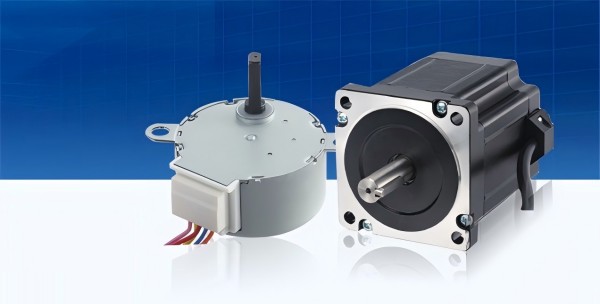Stepper motors, which provide exact control over position and speed, are crucial in contemporary systems. 3D printers, CNC machines, and robotics all use them. The most popular stepper motors are unipolar and bipolar, each with special characteristics. This article will compare their efficiency, helping you choose the right motor for your needs.
What is a Stepper Motor?
Before diving into the specifics of unipolar and bipolar stepper motors, it’s important to understand what a stepper motor is. An electric motor known as a stepper motor rotates in discrete steps rather than continuously like conventional motors do.
This step-by-step movement allows for precise control of position and speed, which makes stepper motors ideal for applications requiring high precision, such as robotics, automation, and printing.

Unipolar Stepper Motors
Each phase of a unipolar stepper motor has a center-tapped winding. This center tap divides each coil into two halves. The current flows through one half of the coil at a time, with the direction of the current switching between the two halves as the motor moves. The center tap is typically used as a common connection point.
Key Features:
- Winding Configuration: Each phase has a center-tapped winding, meaning only half of the coil is energized at a time.
- Simpler Control: Unipolar stepper motors are easier to control because they require fewer wires and simpler control circuits.
- Smoother Operation: These motors are often quieter and have less vibration compared to bipolar motors due to the way the current flows.
However, one major downside of unipolar motors is that they tend to have lower torque output compared to bipolar stepper motors. The use of only half of the coil reduces the overall magnetic field strength, leading to lower torque.
Bipolar Stepper Motors
In contrast, bipolar stepper motors lack a central tap. Instead, each phase consists of a single winding that can be energized in either direction. The current flows through the entire winding, making use of both halves of the coil at all times. This configuration allows bipolar motors to utilize the full magnetic field for greater torque production.
Key Features:
- Winding Configuration: Bipolar motors use a single winding for each phase, which is energized in both directions.
- Higher Torque: Since both halves of the coil are used, bipolar motors generate higher torque than unipolar motors.
- More Complex Control: Bipolar motors require more complex control circuits because they need to reverse the current in the winding for each phase.
Bipolar motors are more efficient in terms of torque output and power consumption because they utilize the entire winding, but they require more complex control systems and often produce more vibration and noise.
Efficiency Comparison: Unipolar vs Bipolar Stepper Motors
The main difference between unipolar and bipolar stepper motors lies in their efficiency, particularly in terms of torque and power consumption. Bipolar motors are generally more efficient than unipolar motors due to their use of the full coil, which results in higher torque output for the same power input.
Efficiency in Terms of Torque
Bipolar stepper motors provide higher torque output than unipolar motors because they use both halves of the coil at all times. This enables the motor to create a more powerful magnetic field, resulting in increased torque. In contrast, unipolar motors only use one half of the coil at a time, which limits their torque production.
Efficiency in Terms of Power Consumption
Since bipolar motors use the full winding, they are more efficient in terms of power consumption. The current in bipolar motors flows through the entire coil, which allows them to produce more torque with less power. Unipolar motors, on the other hand, are less efficient because they use only half of the coil, requiring more current to achieve the same level of torque.
Bipolar vs. Unipolar Stepper Motor Comparison Table
| Feature | Unipolar Stepper Motor | Bipolar Stepper Motor |
| Torque Output | Lower | Higher |
| Control Circuit Complexity | Simpler | More Complex |
| Efficiency | Lower | Higher |
| Vibration | Lower Vibration | Higher Vibration |
| Noise | Quieter | Noisier |
| Power Consumption | Higher | Lower |
| Size | Larger for Same Torque | Smaller for Same Torque |
| Applications | Low-power, low-torque applications | High-power, high-torque applications |
| Cost | Less Expensive | More Expensive |
Applications of Unipolar Stepper Motors
Applications requiring ease of use and control are a good fit for unipolar stepper motors. Usually, these motors are employed in low-power settings where torque demands are less important. Some common applications include:
- 3D Printers: Unipolar motors are often used in 3D printers for their simplicity and smooth operation.
- Small Robotics: For low-torque robotics applications, unipolar motors offer an easy and cost-effective solution.
- Home Appliances: Devices such as microwave ovens, air conditioners, and washing machines may use unipolar motors for precise control in low-torque scenarios.
Applications of Bipolar Stepper Motors
Bipolar stepper motors, due to their higher torque and efficiency, are used in more demanding applications. These motors are typically found in systems that require precise motion control with higher power requirements. Common applications include:
- CNC Machines: Bipolar motors are ideal for CNC machines that require high torque to move heavy loads accurately.
- Robotics: Many high-performance robots use bipolar stepper motors to achieve the precision and torque needed for complex tasks.
- Industrial Automation: In applications such as conveyor systems, automated assembly lines, and material handling, bipolar motors provide the efficiency and power necessary for smooth operation.
Conclusion
In summary, unipolar stepper motors are simpler and smoother but less efficient and offer lower torque. Bipolar motors are perfect for high-performance applications because they are more efficient and produce more torque. If simplicity and cost are more important, unipolar motors may be suitable. Consider the power, control complexity, and budget of your application to choose the right motor for your needs.

